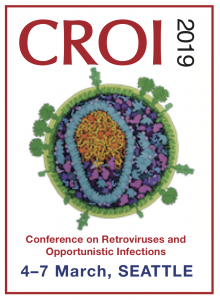Same-day ART is effective in San Francisco Rapid-ART clinic
28 March 2019. Related: Conference reports, Antiretrovirals, Treatment strategies, CROI 26 (Retrovirus) 2019.
Offering same-day ART on diagnosis as part of comprehensive care at a specialist HIV clinic in San Francisco reported such significant benefits that it is the standard of care in the city.
Sara Coffey and colleagues presented a retrospective analysis of 225 newly diagnosed individuals referred to Ward 86 Rapid-ART programme from 2013 to 2017. Of these, 98% (216/225) accepted same day ART (4 declined, 3 were not offered and 2 were lost to follow-up). [1]
Baseline characteristics included median age 30 years (range 16-61) with median CD4 count and viral load of 441 (range: 3 to 1905) cells/mm3and 37,000 (range: 0 to >10 million) copies/mL respectively.
This was a largely male cohort (7.9% women). Ethnicity was 12% African American, 27% Hispanic and 37% white.
This is also a cohort with complex social factors: 51% reported substance use, 48% had a major mental health diagnosis and 30% were either homeless or had unstable housing.
Median time from the Rapid-ART clinic visit to starting ART start was 0 days (range 0 to 56) achieving undetectable viral load in median of 41 days.
Over a median follow-up of 1.1 years (range 0 to 3.9) 96% participants had at least one viral load <200 copies/mL with 92% undetectable at one year. Viral rebound >200 copies/mL was reported for 14% of participants with 78% of these resuppressing to <200 copies/mL.
These results support the effectiveness from offering same-day ART in the context of a multidisciplinary care package (including case worker support for insurance, housing etc), even in a complex population with high rates of substance use, mental health issues and homelessness.
Early results from the pilot study of this programme in 39 men were first presented at the IAS conference in 2015. [2]
comment
A similar model has been developed at some UK clinics including 56 Dean Street which has reported similar rates of high patient acceptability. [3]
All projects work to integrate other social support within this model, but prioritise starting ART which other services become involved.
ART in the San Francisco project is almost exclusions based on integrase-inhibitors which both overcomes concerns which results from drug resistance tests are still ongoing, but also minimises risk of serious side effects.
References
- Coffey S et al. High rates of virologic suppression after rapid ART start in a safety-net clinic. Conference on Retroviruses and Opportunistic Infections (CROI), 4-7 March 2019, Seattle. Poster abstract 515.
http://www.croiconference.org/sessions/high-rates-virologic-suppression-after-rapid-art-start-safety-net-clinic (abstract and poster) - Pilcher C et al. Providing same day, observed ART to newly diagnosed HIV+ outpatients is associated with improved virologic suppression. 8th IAS Conference on HIV Pathogenesis, Treatment and Prevention (IAS 2015), 19 – 22 July 2015. Oral abstract WEAB0104.
http://www.abstract-archive.org/Abstract/Share/70312 (abstract)
http://pag.ias2015.org/PAGMaterial/Webcast/2230_13083/webcast.mp4 (webcast) - Whitlock G et al. Rapid initiation of antiretroviral treatment in newly diagnosed HIV: experience of a central London clinic. 23rd BHIVA 4-7 April 2017, Liverpool. Oral abstract O14.
http://www.bhiva.org/documents/Conferences/2017Liverpool/Presentations/170406/GaryWhitlock.pdf (PDF)
http://www.bhiva.org/170406GaryWhitlock.aspx (webcast)


 Simon Collins, HIV i-Base
Simon Collins, HIV i-Base